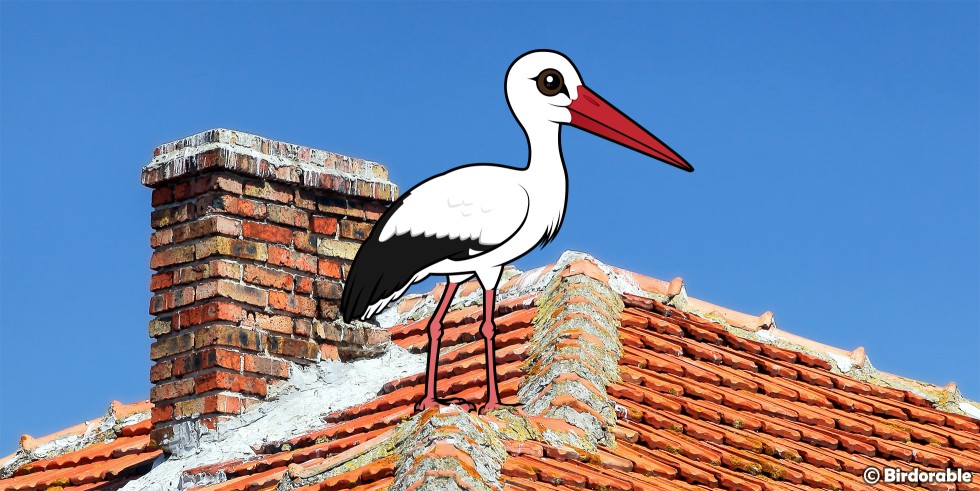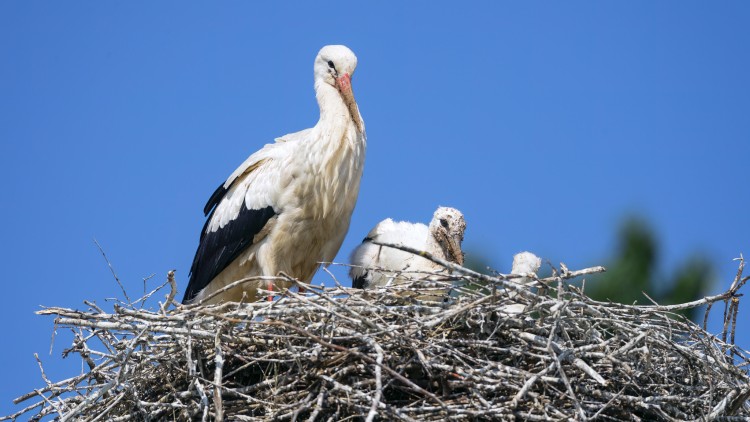Busting a Bird Myth: Storks Deliver Babies

The myth that storks deliver babies is a charming, old tale rooted in folklore, but it has no basis in reality. Storks don’t actually deliver babies, of course! This idea likely arose from a combination of the bird’s natural behavior and ancient symbolism.
The popularity of the myth originates in Europe, where the common breeding White Stork is the species in question. Behaviors of these migratory birds, in addition to cultural trends and other factors, may contribute to the myth of storks delivering babies. The myth is known in North America as well, though our only native stork is a very different looking bird, the Wood Stork.
Storks are symbols of new life and fertility
In many cultures, storks have long been associated with birth and family. This connection might stem from the bird’s migration patterns and nesting habits. White Storks, which are common in Europe and parts of Africa, return to their breeding grounds in the spring, a season often linked with new beginnings and fertility. People noticed that storks often built their nests on rooftops or chimneys, close to human habitation. The arrival of storks around the same time families were expecting new babies created a symbolic link between the birds and new life.
Storks are attentive parents
Storks are known to be very caring and nurturing parents. They build large, sturdy nests where they raise their chicks, and both parents are involved in feeding and protecting their young. This nurturing behavior may have contributed to the idea that storks were somehow connected with caring for newborns, leading to stories about them delivering babies.
Folklore and storytelling
The stork baby myth was popularized by European folklore. In Northern Europe, especially in Germany and Scandinavia, storks were considered lucky and were seen as harbingers of good fortune. According to folklore, if a stork built a nest on your house, it was a sign that good things, including babies, were coming. Parents likely used the stork story as a way to explain the arrival of a baby to young children, simplifying the mysterious process of birth in a way that was wholesome and magical.

White Stork nest by Tambako The Jaguar (CC BY-ND 2.0)
Influence of literature
One of the reasons the stork myth became widespread in modern culture is the work of Hans Christian Andersen, a famous Danish author. In 1838, he wrote a fairy tale called The Storks, in which storks deliver babies to families. This story spread throughout Europe and beyond, reinforcing the connection between storks and childbirth. Eventually, it became a commonly told story in many cultures.
Victorian-era sensibilities
During the Victorian era, discussions about childbirth and reproduction were considered somewhat taboo, especially around children. The stork story provided a convenient way for parents to avoid detailed explanations of human reproduction, offering a whimsical, innocent explanation instead. This helped the myth stick, and it became a go-to story for parents explaining where babies come from.
The timing of stork migrations and birth seasons
In some parts of Europe, the arrival of storks after their migration coincided with the birth of many babies, especially in spring and summer. Historically, late spring and summer were common times for babies to be born, since pregnancies tended to start during winter, when families spent more time indoors. The overlap between stork migrations and baby booms may have helped reinforce the myth.
While storks don’t deliver babies, the myth has endured because of its warmth, simplicity, and the bird’s association with fertility and new beginnings. Today, we still see the stork in cartoons, greeting cards, and baby shower decorations, keeping this old legend alive in popular culture.













Comments
Leave a comment
Thank you!